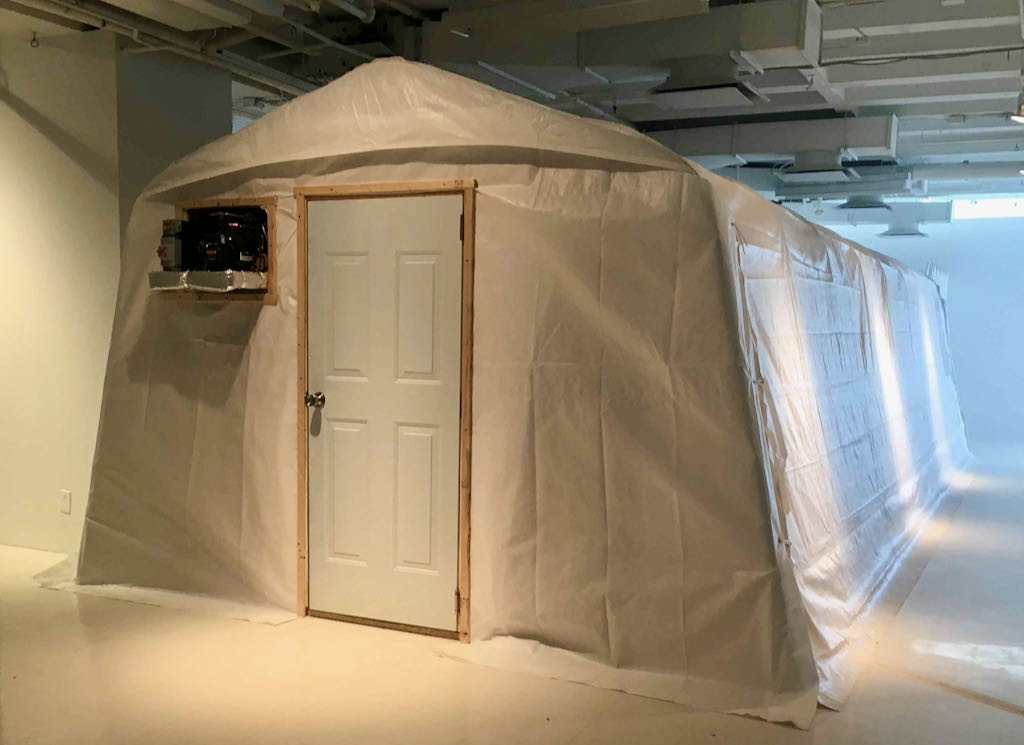On a masterful installation by Ludovic Boney presented at the Visual Arts Gallery from April 11 to May 19, 2019 and designed specifically for the venue.
“That house is prestige, distinction, but it’s especially the pleasure of being together, among family and friends. Imagine the living room at Christmas, full of all the people you love.”
Arianne Dénommé, Du chez soi, (Montreal: La mauvaise tête, 2012).
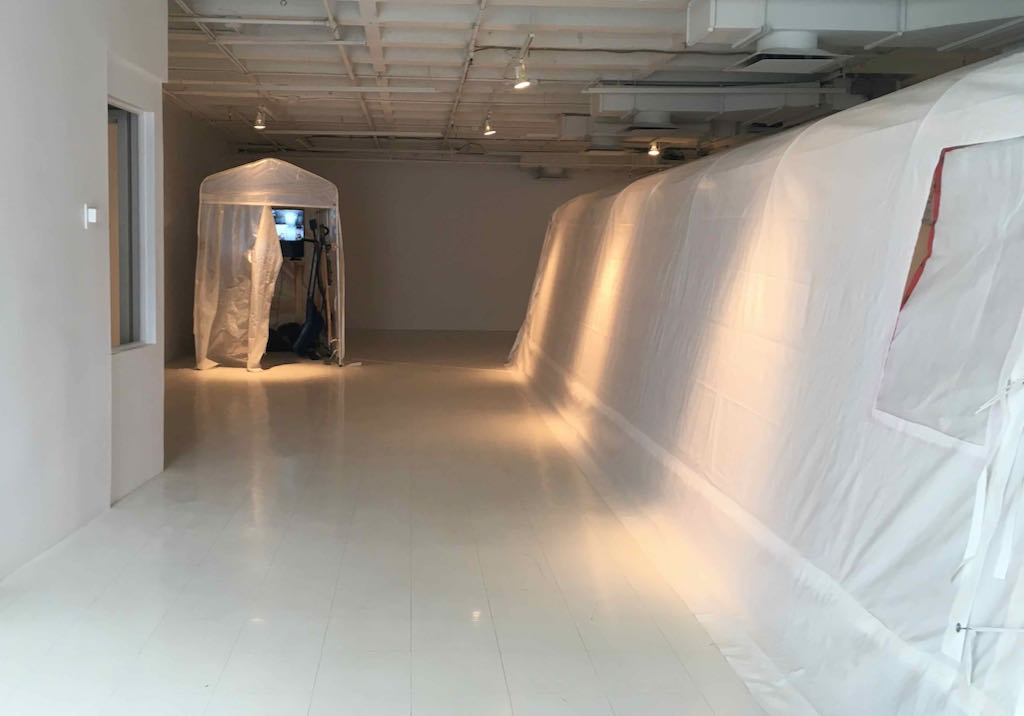
Ludovic Boney ‘s installation Family Gathering, made specifically for the exhibition space of the Galerie des arts visuels at Université Laval, consisted of two Tempos, temporary driveway shelters of a type that has become an iconic feature of Québec’s winter landscape. Set up along the gallery’s longitudinal axis, the larger of these two structures grabbed viewers’ attention as they stepped into the room. Plastic tarpaulin was attached to the space’s white walls, taking on the gallery’s shape and taking over its role of presentation. Becoming a gallery within a gallery, the piece invited viewers to enter a succession of somewhat narrow chambers containing piles of household objects, rooms that were to be explored using the senses.
Feelings
You first entered a refrigerated room, gripped by a shiver caused by the prevailing chill and assaulted by the deafening sound of a compressor that kept the temperature constant. The shelves were adorned with imitation food prepared, ostensibly, for a banquet: there were aspics, mimosa eggs, tiered cakes and platters of finger food, sandwiches, cheese and cold cuts along with fruits, cupcakes and tarts.
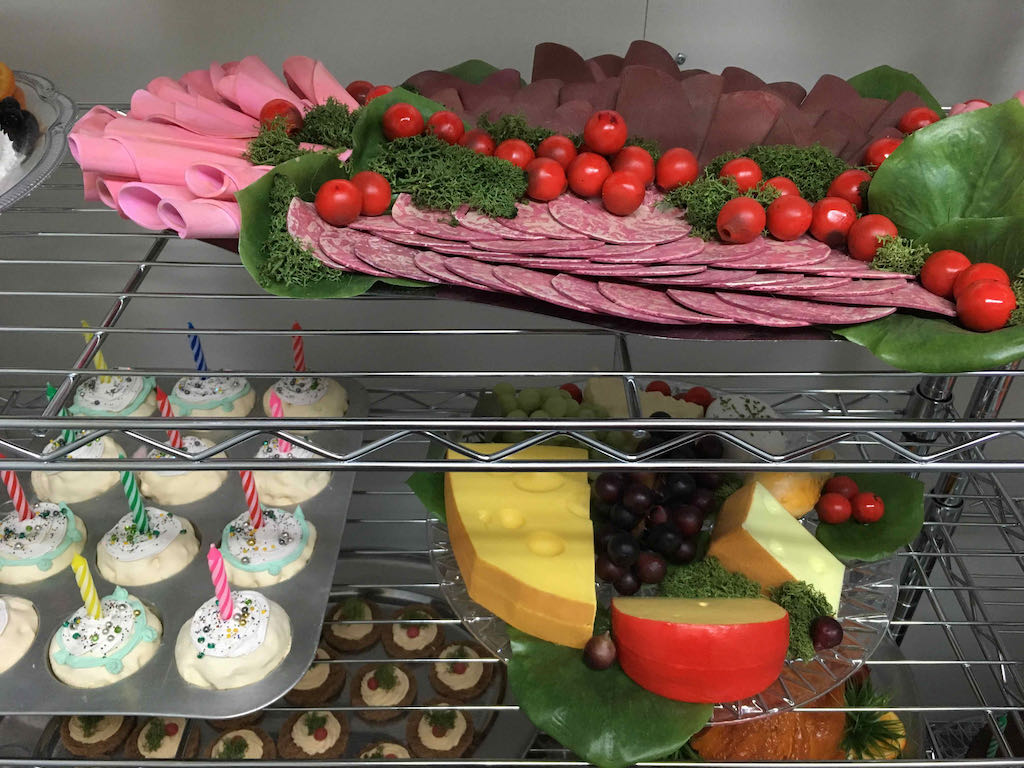
Next came a cupboard filled with board games and jigsaw puzzles, some pieces of which had been used to make the aspics and tiered cakes. This very narrow, uncomfortably warm space, which formed a sharp contrast with the refrigerated room, together with its seemingly dust-laden air generated a feeling of claustrophobia. Few visitors spent much time in this confined space, which was too inhospitable for examining the games and puzzles it contained. You soon found yourself in a kind of storehouse piled with discarded objects ranging from sports and recreation equipment, outdated household appliances, scraps of floor coverings and paint to an unused aquarium, boxes of Christmas decorations and an old crucifix placed on a crossbeam of a timber frame. The low, sloping roofs and the ambient heat recreated a feeling of rooftops heated by the sun. Next came a small clothes closet hung with fur overcoats and woolen garments. The pervasive odour called to mind the cedar chests that were once found in many homes. The narrowness of the room and its unusual shape forced you to pick your way, rubbing up against the clothing as you proceeded.
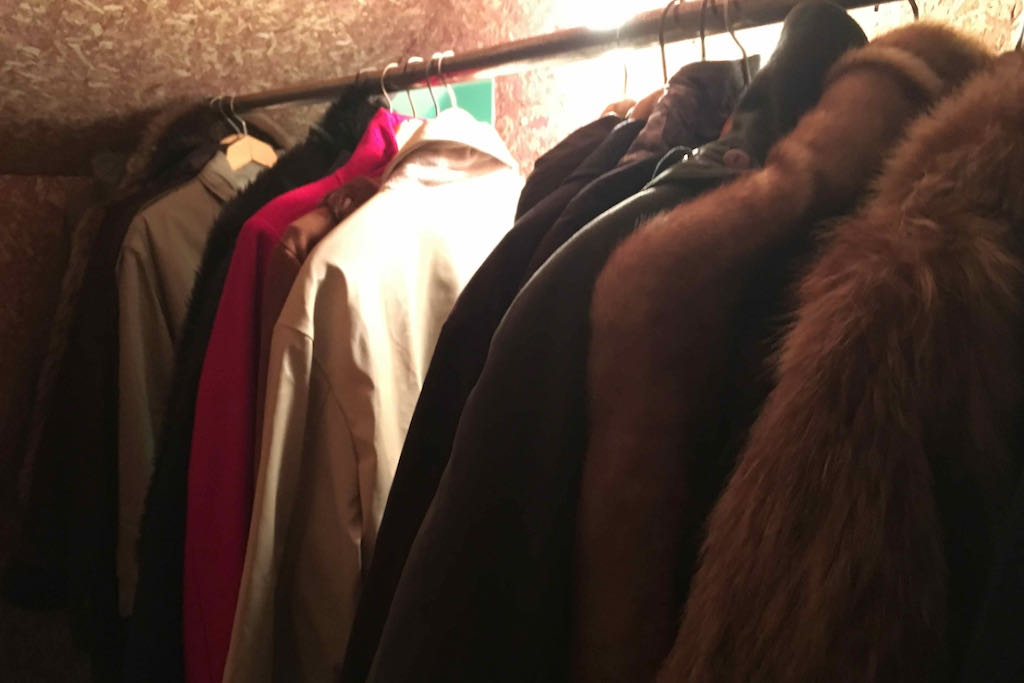
Leaving the clothes closet you approached a bathroom, balancing precariously on a narrow walkway placed across a bathtub filled with boots set there to dry. Magazines and lifestyle publications, bath toys and personal hygiene products were scattered on the edges of the bathtub and sink next to the toilet. After having your senses awakened by the walk through the other rooms, the accessories exhibited in the bathroom brought you face to face with the takeover of the body by the quick fixes of marketing and with a rather regulated healthy lifestyle. Finally, in the courtyard after exiting, a final scene invited to you a meal that other guests seemed to have unexpectedly abandoned. A soundtrack made up of the tinkling of cutlery, chewing and swallowing noises and, at times, laughter, lead you to somewhat realistically relive the event, although without the animated conversation that is usual in such circumstances. All that was left were the noises of mechanical movements made by the body intent on its sustenance.

Remembering
A high fence surrounded the courtyard where the journey through the domestic spaces staged by Boney came to an end. You returned to the gallery space by keeping to the back side of a wall, moving through a leftover space normally closed to human traffic and located between the gallery’s street-front window and the exhibition space.
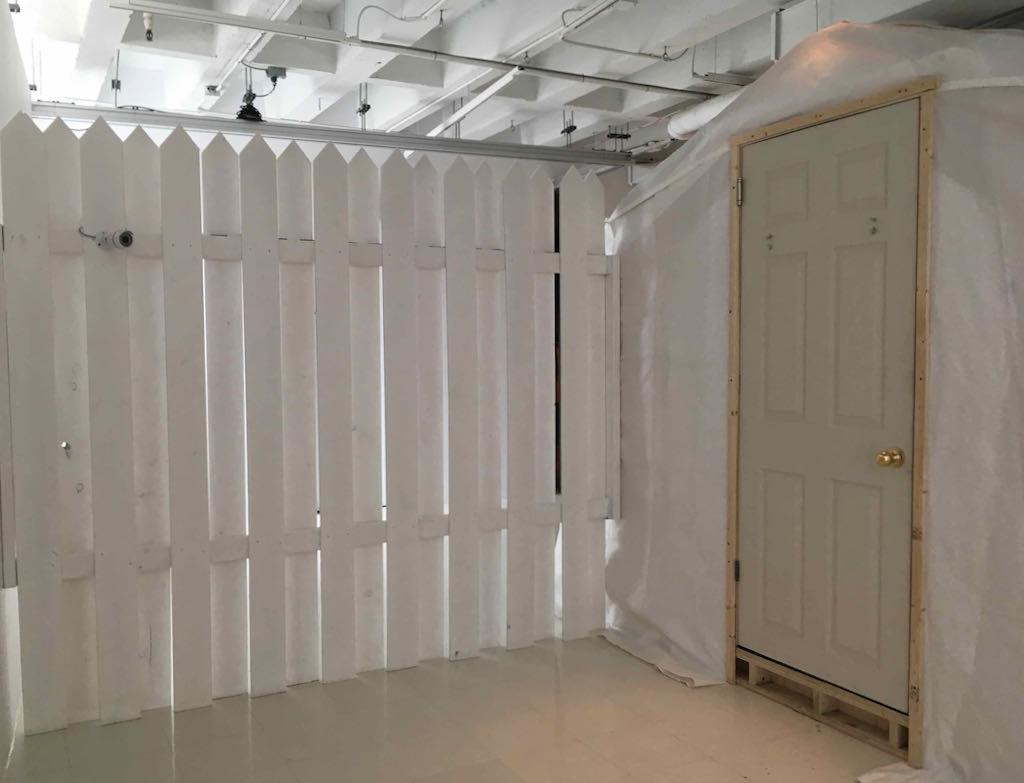
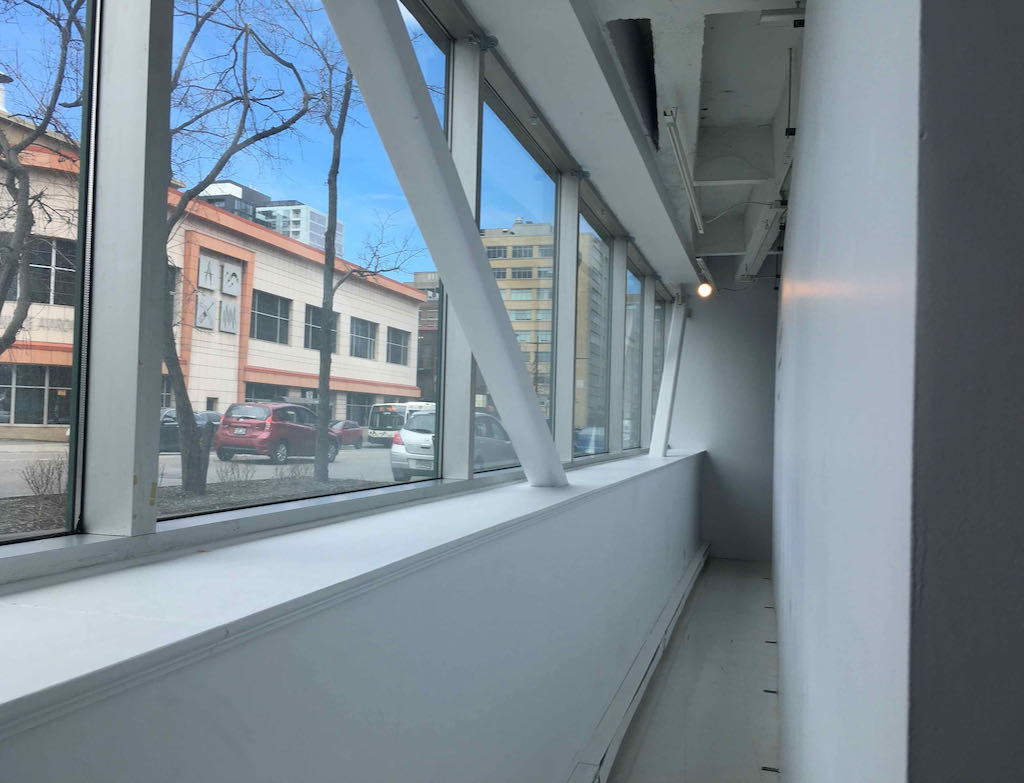
As you emerged from behind this wall, your vantage point was some distance back from the temporary shelter you had just explored and foregrounded its resemblance to an Amerindian longhouse, the basic model for the habitations once used by groups belonging to the Iroquois culture. Boney, who was born in the Huron village of Wendake, thereby assumed his Indigenous origins and showed the richness of a singular family heritage.
This vernacular reference also enabled him to contrast Amerindian thought with the way of life imported—and imposed—by the Europeans. The longhouses originally housed several families related by blood or matrilineal connections. It represented a communal way of living founded on the sharing of resources and the free circulation of individuals within an extended community. The organization of the successive spaces inside the temporary shelter alluded, however, to a mode of life based on the often patriarchal family unit that predominates in the West. The allusions to various types of friendly or official receptions as embodied in a meal between friends or banquet preparations attested to a distinct type of social organization focused on the family and articulating the relationships of the members of a group to other members of their community.
As Denys Delâge and Jean-Philippe Warren showed in Le piège de la liberté: Les peuples autochtones dans l’engrenage des régimes coloniaux, a work which describes the shock that the arrival of the Europeans had on the Indigenous peoples of North America, the latter’s social relationships were based on a dynamic system of exchange rooted in gift giving that entailed a reciprocal obligation. Existing outside the mercantile system, this commerce involved its participants in continual negotiations that contributed to the richness of their social relationships and created the conditions for solidarity between them. The fluid circulations of goods and resources brought about egalitarian human relationships without encouraging the accumulation of riches by any one family or group within a community. Social harmony was anchored, therefore, in individual modesty based on frugality and the rustic character of personal possessions, a simplicity not motivated by the asceticism typical of Christianity.
Exchanging
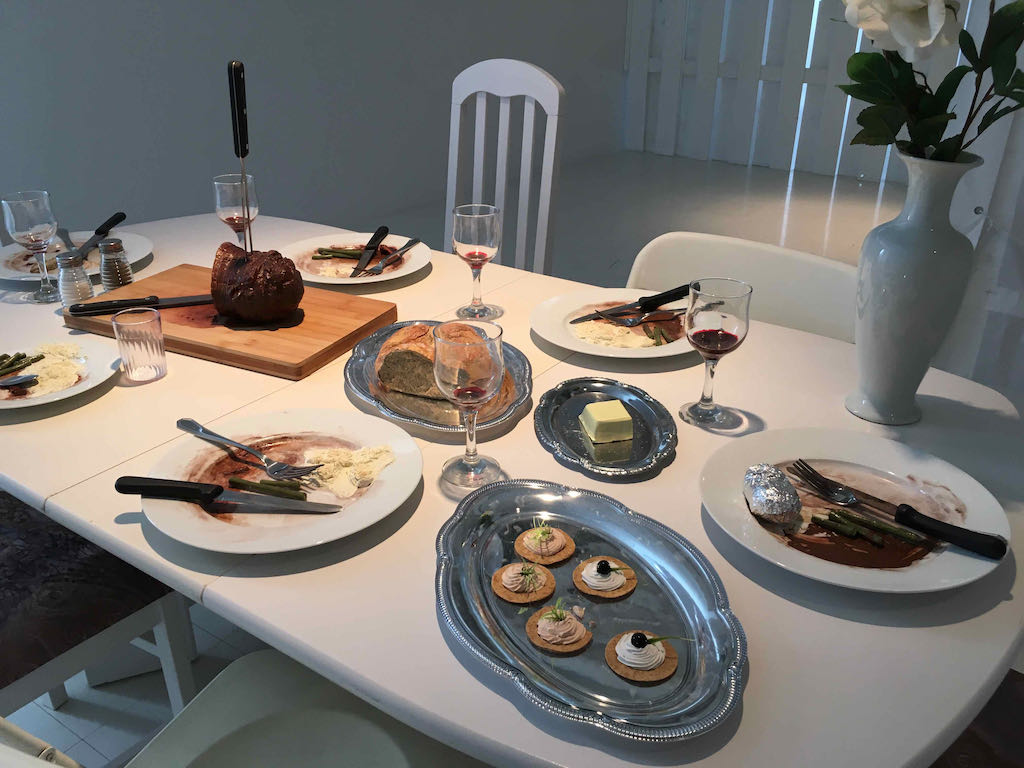
While the successive spaces of Bonney’s installations do not, strictly speaking, constitute scenes from contemporary life, they undoubtedly represent their underpinnings. Amassing piles of “food” for a banquet and an imposing array of objects discarded after having outlived their usefulness, they evoked places and events that are familiar to Quebecers, even if the components are somewhat outdated. This antiquated character created, moreover, a certain distance that enabled the artist to comment on our current ways of life through the prism of the years.
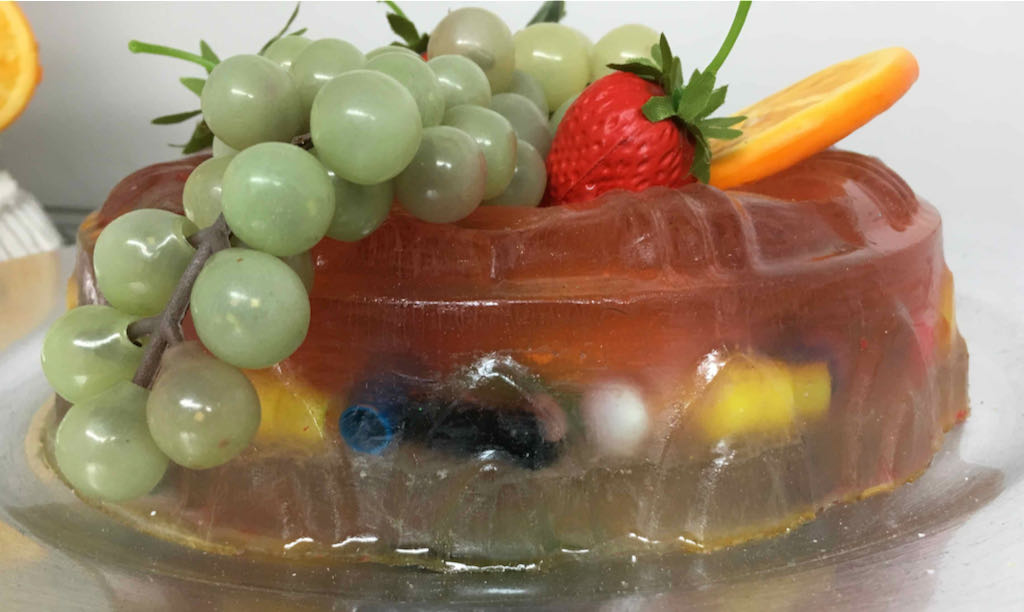
The presentation of trays of food and tiered wedding cakes attested to an undeniable aesthetic concern for appearances intended to attract and, indeed, to captivate. Moreover, the haphazard collection of puzzles and board games evoked more convivial evenings spent with friends and family, while the boots placed in the tub to dry off recalled family gatherings during the Christmas Holiday Season. These occasions all describe relationships of varying degrees of intimacy between individuals, which Boney contrasted with the anonymity of public space, giving viewers an overview of it as they made their way behind the gallery display window fronting the street.
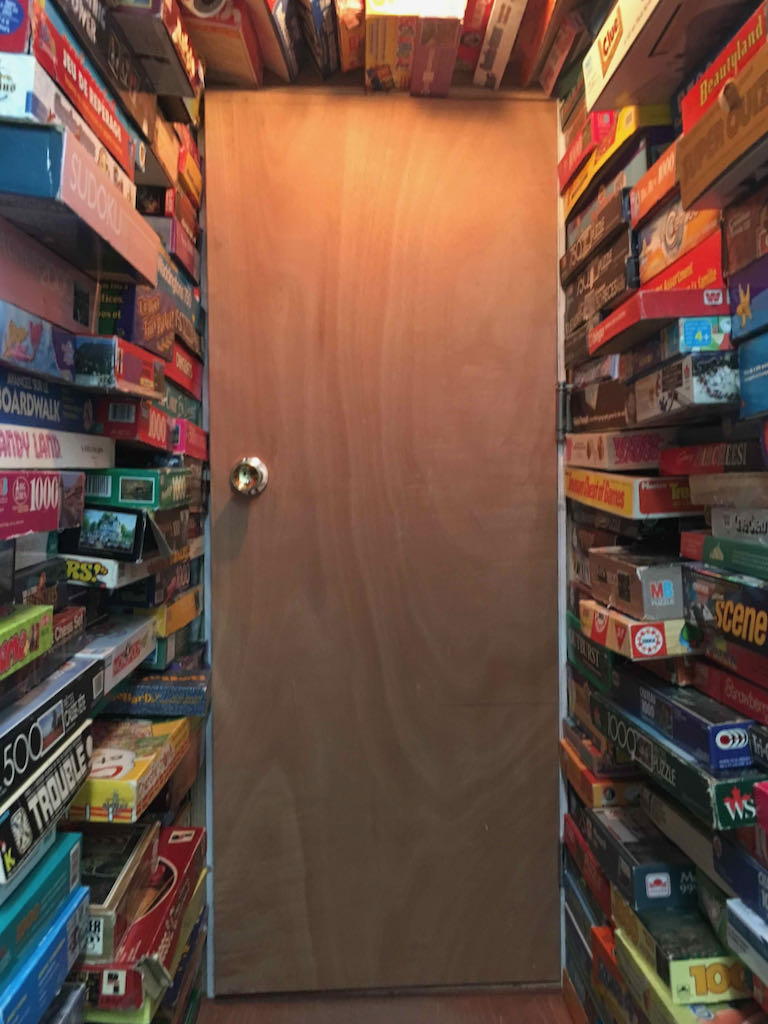
While the trip through the successive spaces provided an opportunity to revisit the evolution of Western modes of socialization and the changes they have undergone in varying contexts, the tools, accessories, clothing and stored objects attested to their role as intermediaries in the activities that bind us. Whether it was food prepared for a banquet, jigsaw puzzles that were already outdated by the time you fitted in the last piece, or equipment and accessories that were packed away until next season, or another lifetime—all of them, in their discarded state, spoke of their limited life spans. Their familiar yet somewhat old-fashioned look conveyed a sense of fleeting appearances and passing trends. Moreover, these piles spoke of a kind of abundance or proliferation that is accentuated by accelerated consumption cycles punctuated by changes of fashion. With these pieces, Boney brought viewers face to face with a pattern of consumption that, stimulated by a market economy, is the driving force behind contemporary capitalism—many prefer to call it “late.” The ongoing and reciprocal sharing of foodstuffs and objects that characterized Indigenous culture was replaced by the mobilization of society for the purpose of grabbing resources to benefit a sole individual, family or small group in a consumerist and materialist retrenchment at the heart of all economic activity.
Dwelling
With the smallest temporary shelter, which resembled a garden shed, Boney reflected on the traditional meaning of land occupancy as it existed in Indigenous cultures. For in this little storage room were heaps of cutting and yard-maintenance tools, snow shovels and traction pads, etc.—utilitarian objects attesting to the subjugation of the environment by human activity. As Delage and Warren pointed out, under 16th-century English law, “to improve” the land meant to claim it as a possession for one’s own use, most often for agricultural purposes. This lead to our current logic of resource extraction, represented in the installation by the objects used for outdoor maintenance tasks.
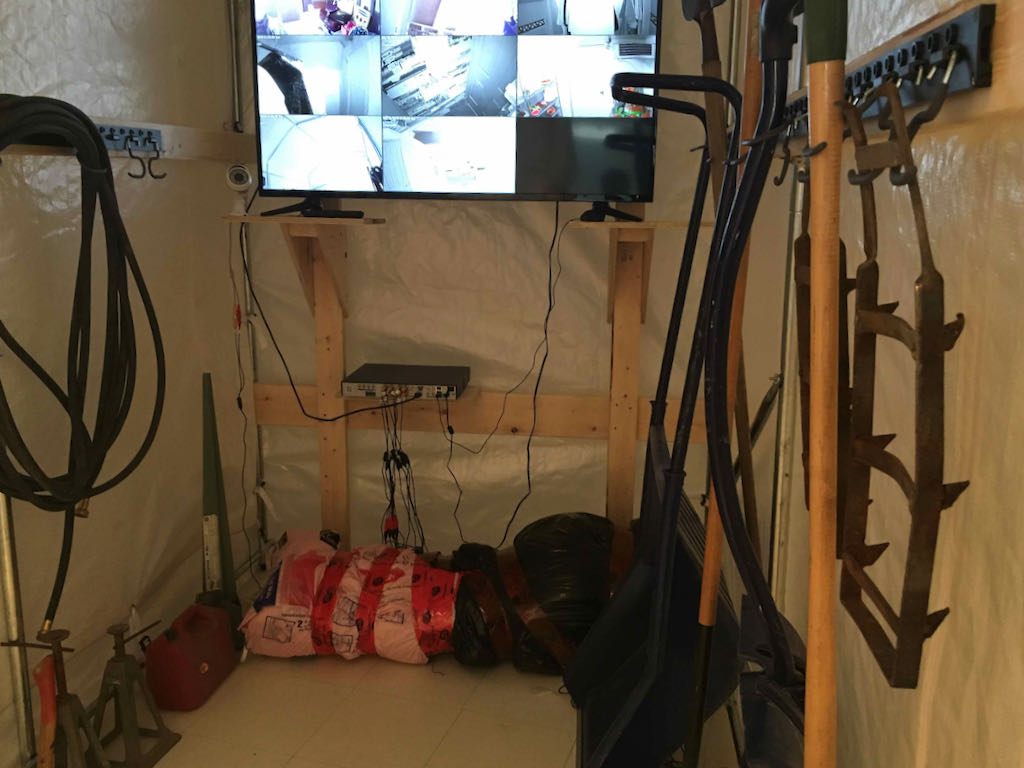
Delage and Warren stress that Indigenous cultures’ relationship to the land was based on a different kind of symbolism. For example, among the Innu, the term kanauentamun designated the “guardianship” of a territory in accordance with a benevolent logic of caretaking. The lands that the First Nations have always occupied belong to them by virtue of a concrete customary order relating to their emotional links with these lands, just like their ancestors before them. In their traditional narratives, their experience of nature led them to attribute, to the animals, plants and the natural elements of air, fire, wind and water, spirit, conscience and intentionality akin to those of human beings, in a circular reciprocity that made humans’ well-being dependent upon that of the land.
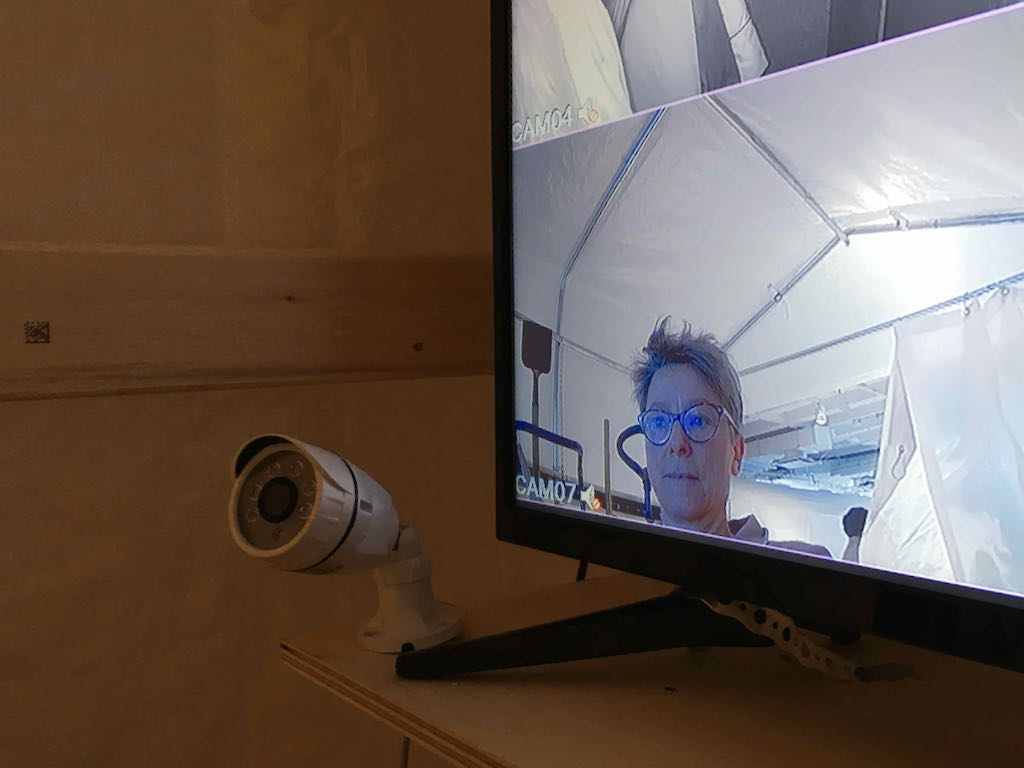
In the second small shelter, Boney foregrounded a singular relationship to the land, represented in the piece by a multi-screen mosaic that re-broadcast images recorded earlier by surveillance cameras pointed at visitors in the household environments. This mosaic showed prisoners involved in playfully consuming technological images in a meager space containing a computer, cut off from immediate contact with their peers within a purely technical territory. At the same time, the surveillance device, which followed visitors for the entirety of their visit to the domestic spaces arranged in the main component of the installation, alluded to the constant surveillance of public and private spaces to which we are now subject. This invasive element of the installation helped create, moreover, a feeling of oppression as powerful, at least, as that produced by the accumulations of objects in each of the staged environments. Boney brought visitors face to face with the types of relationships that currently connect individuals by including technology’s takeover of these relationships.
Despite its references to traditional Indigenous culture, Boney’s installation cannot be reduced to affirmations of identity since allusions of this type play a mainly underlying role in the piece. The installation, more pertinently, stages and revisits the interactions we have with individuals, objects and the environment within the framework of an encroaching market economy and technological infrastructure. Although associated with pleasure, the hedonism and playfulness foregrounded by today’s consumer society prove to be powerful mechanisms in a rigid symbolic system that reaches into, and shapes, the deepest recesses of our private lives. Behind its pleasant character, this Family Gathering describes us as trapped in ways of life that it invites us to examine and question.
(translated by Donald McGrath)

